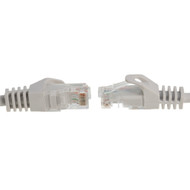Cat5e Ethernet
Posted by Yoel on Mar 7th 2023
Ethernet connections are essential for establishing a reliable network for data communication. Ethernet cables come in different categories, each with specific features and capabilities. One of the most popular and widely used categories is Cat5e (Category 5e) Ethernet cable.
Cat5e Ethernet cable is an improved version of the standard Cat5 cable. The "e" in Cat5e stands for "enhanced," indicating that it has better specifications than the previous standard. It has four twisted pairs of copper wires that are covered by an insulating material and enclosed in a plastic jacket. The wires are twisted to reduce interference and cross-talk between them.
One of the most significant advantages of Cat5e Ethernet cable is its bandwidth capability. It can support up to 1000 Mbps (Gigabit) of data transfer, making it suitable for high-speed data transmission. This feature makes it an ideal choice for applications that require high bandwidth, such as video streaming, online gaming, and large file transfers.
Cat5e Ethernet cables are also compatible with most network devices, including routers, switches, and modems. They are widely used in homes, offices, and data centers due to their high reliability and low cost. Additionally, they can support cable lengths of up to 100 meters, making them suitable for long-distance network connections.
Another essential feature of Cat5e Ethernet cable is its backward compatibility with the previous Cat5 standard. This means that it can be used in place of Cat5 cables without the need for any modifications or upgrades to the network infrastructure.
Installing Cat5e Ethernet cables is also relatively easy and straightforward. They use a standard RJ45 connector that can be easily plugged into any Ethernet port. The cables are available in various lengths, colors, and designs to suit different network needs.
In conclusion, Cat5e Ethernet cable is an excellent choice for establishing a reliable and high-speed network connection. It is cost-effective, easy to install, and compatible with most network devices. Its high bandwidth capability makes it suitable for applications that require high-speed data transmission, and its backward compatibility with the previous Cat5 standard ensures that it can be used in existing network infrastructure without any upgrades or modifications.


